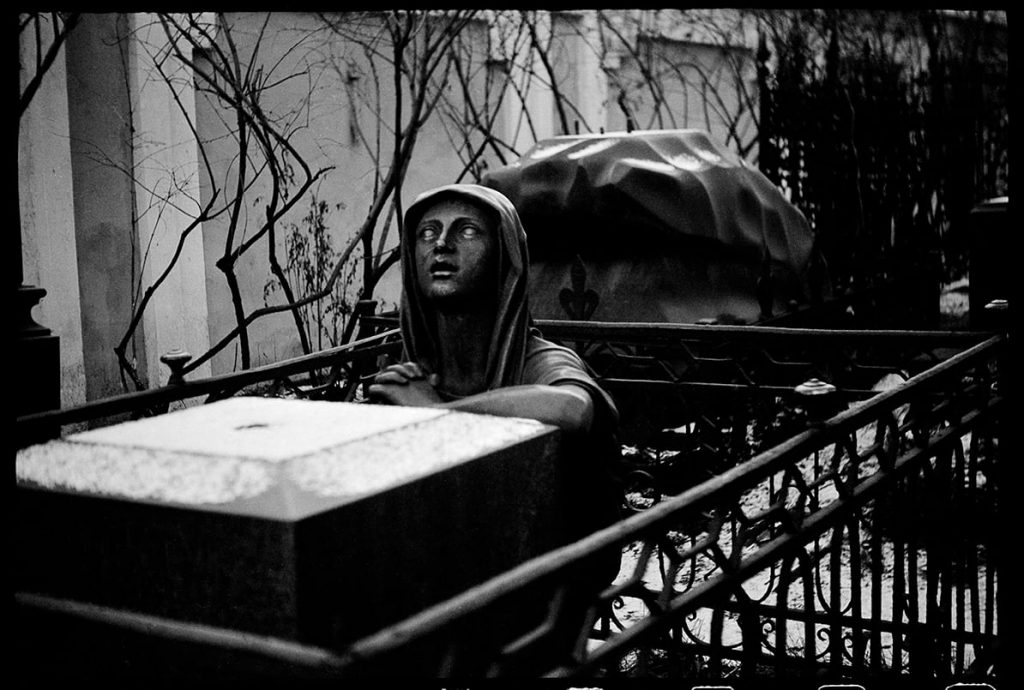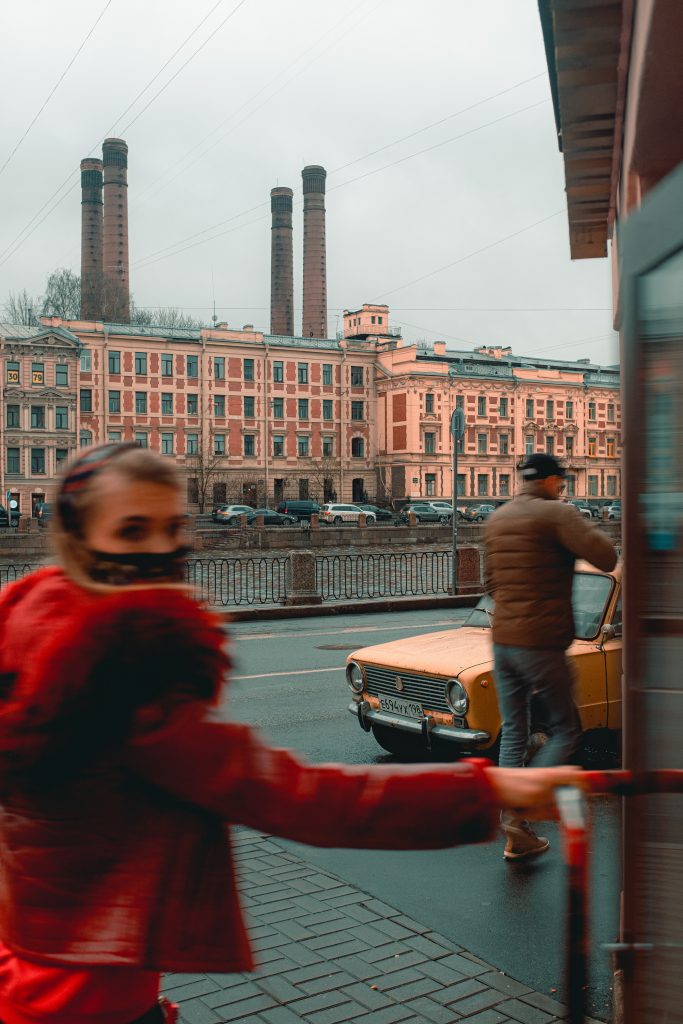In: St. Petersburg

Saint Alexander Nevsky Monastery, Leningrad, USSR | Masha Ivashintsova |1977
July 21, 2023Saint Alexander Nevsky Monastery, Leningrad, USSR | Masha Ivashintsova | 1977
I was not born
to amuse the
Tsars.
— Alexander Pushkin
I loved without memory: is that not an epigraph to the book, which does not exist? I never had a memory for myself, but always for others.
— Masha Ivashintsova
Masha Ivashintsova has been described as a ‘Russian Vivian Maier‘ as she took so many photographs – creating a world, in a way, of her city – in her lifetime but most of them have only been shared since her death. Her eye for contemporary life under the Soviet regime – especially in St. Petersburg later Petrograd later Leningrad then again St. Petersburg (the shift in name and what that entails in the socio political sphere is a good place to stand, when considering Ivashintsova’s photographs) – was an honest and personal portrait of her life and times. One might argue that the veracity of these experiences captured with her lens were – are – so honest and powerful that we can understand why she held them to herself for so long. Her own personal history was also painful, and that was surely a factor, too.
Or, perhaps as I allude to with the quote from Pushkin, autocratic, authoritarian societies prefer facile propaganda and punish uncomfortable truths….
Ivashintsova (1942 − 2000) was a photographer based in Saint – Petersburg (then Leningrad, in the USSR) “who was heavily engaged in the Leningrad poetic and photography underground movement of the 1960−80s. Masha photographed prolifically throughout most of her life, but she hoarded her photo-films in the attic and rarely developed them. Only when her daughter Asya found some 30,000 negatives in their attic in 2017 did Masha’s works become public.”(from here)
“Struggling with life under Communism, by the mid-1980s Masha was committed to a mental hospital against her will, as a way to get her in line with the USSR’s philosophies. Working throughout her life as a theater critic, librarian, cloakroom attendant, design engineer, elevator mechanic, and security guard/riflewoman, she was a chameleon, always camouflaging her inner artist. Only through her diaries and photographs was she able to show her true self.”
A fine article – and interview – with her daughter Asya Ivashintsova-Melkumyan can be enjoyed here. A site devoted to Ivashintsova’s amazing archive can be seen here : as well, there is a social media page that shares her work at regular intervals here.
~ Bart Gazzola
Read More
Around the Red | Viktor Balaguar
April 14, 2022Around the Red | Viktor Balaguar
Balaguer’s series Around the Red (which includes the image shared here) is perhaps my favourite of his series (a hard decision, though, as Teriberka or Street Photography for Xiaomi are enchanting, too).
Often, his images of St. Petersburg and Moscow suggest a perpetual winter in Russia, but these are less so of that style. The vibrant reds – which never seem forced and hold your eye without overly dominating the scene – run through these works, which are captured moments of places and people. The title implicates historical factors, of course, as Russia and the world are still negotiating the rise and fall of the USSR, in contemporary Russia and beyond those borders (sometimes acknowledging what happened, sometimes not, as we dance ‘around the red’). There is no point when ‘then’ stops and ‘now’ begins in sites of contested narratives (like St. Petersburg or Moscow, Eastern Europe or even in a larger world history), and Balaguer’s Around the Red sometimes hints – and sometimes hammers – at that, visually.
I should add that I began writing this post prior to the most recent acts of war by Russia, but that simply adds more weight to the geo – political insinuations of Balaguer’s scenes….perhaps, as Aleksandr Solzhenitsyn warned us in his The Gulag Archipelago if you “dwell on the past…you’ll lose an eye. Forget the past and you’ll lose both eyes.” To be honest, I had mixed feelings about sharing this work, considering the current political climate, but will temper that with the recommendation of Timothy Snyder’s book Bloodlands: Europe Between Hitler and Stalin, from 2010…..
From here : French photographer, architect and interior designer Viktor Balaguer fell in love at first sight with the ‘Venice of the North’ where he has settled with his family. “Saint Petersburg is a romantic city where you can go from a narrow street to wide avenues, where you follow the sublime and immense Neva River that is completely frozen for part of the year,” he said, calling it “A city of strong contrasts, with a succession of magical palaces and imperial facades whose entrance gates you must cross and visit the dark backyards of the Soviet era. A city deeply melancholic by nature, immersed in a relaxing rhythm of life and permanently open to contemplation.”
In selecting this image, I had a difficult time, as any of the vignettes in Around the Red by Balaguer are worthy of consideration: you can see more of them here, and many of his other fine images at both his IG: @viktor_balaguer and his site.
~ Bart Gazzola
Read More
Metro Station Crowd 1, City of Shadows, 1992
April 20, 2021Alexey Titarenko, Vasileostrovoskaya Metro Station Crowd 1, from City of Shadows, 1992
I was twenty two when Titarenko captured this image, a freshly posthumous portrait of the USSR – and that was nearly forty years ago. The Cold War, as we knew it, was over, but the uncertainty, both for the bustling passengers of the once and future St. Petersburg, after its decades as Leningrad, and the rest of the world, is encapsulated in this image. Titarenko is an acclaimed photographer, not least for how after “the collapse of the Soviet Union in 1991 he produced several series of photographs about the human condition of the Russian people during this time and the suffering they endured throughout the twentieth century. To illustrate links between the present and the past, he created powerful metaphors by introducing long exposure and intentional camera movement into street photography. The most well known series of this period is City of Shadows.” More of Titarenko’s work can be seen here.
~ Bart Gazzola
Read More
Recent Comments